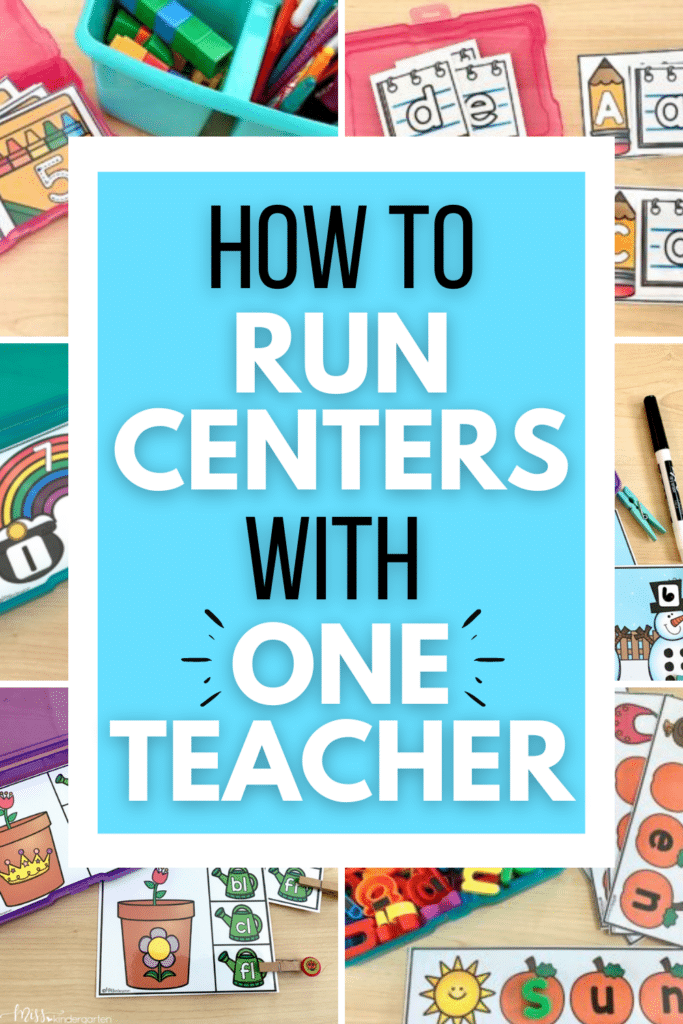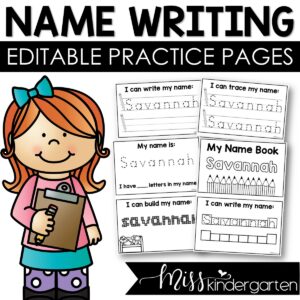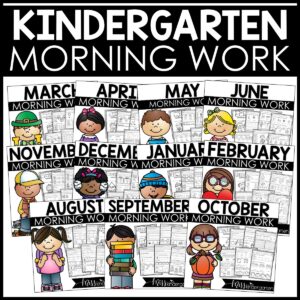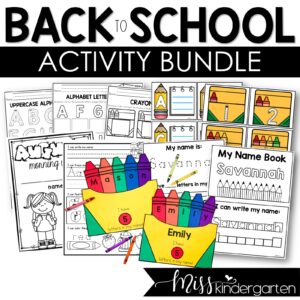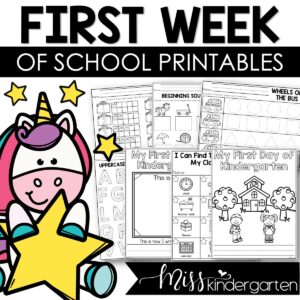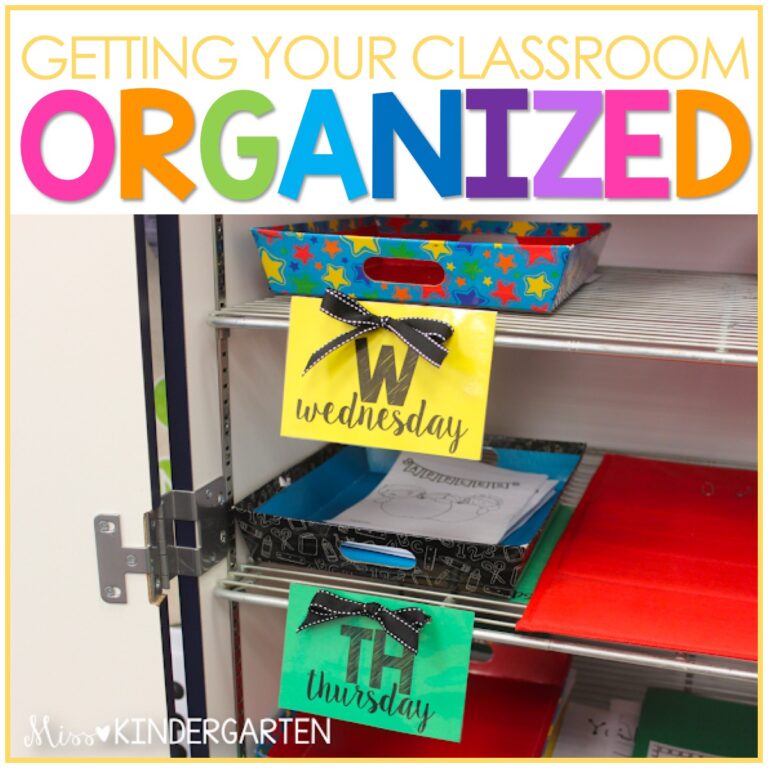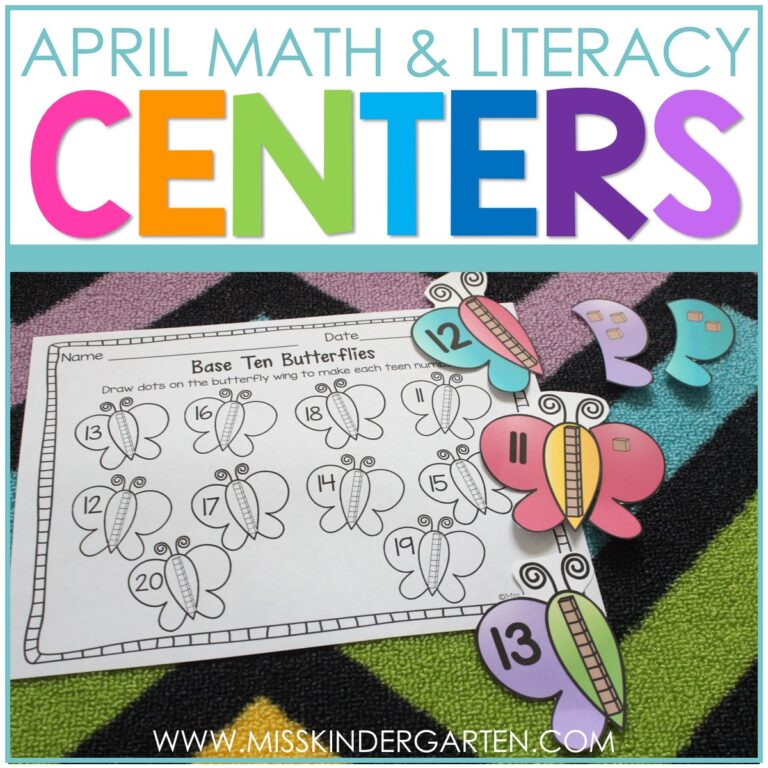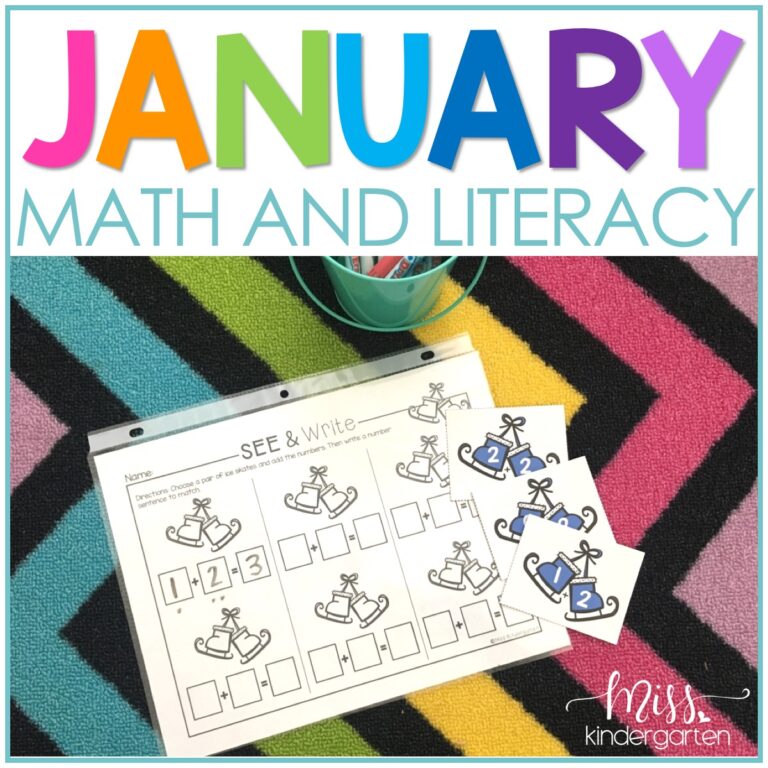5 Tips for Managing Centers with One Teacher
As a kindergarten teacher you are already aware that learning centers play a big part in the classroom. They are vitally important to providing our young students with the repetition and practice needed to master new skills and concepts. But they come with their own challenges too! One of those challenges is managing centers when you are the one and only adult in the classroom.
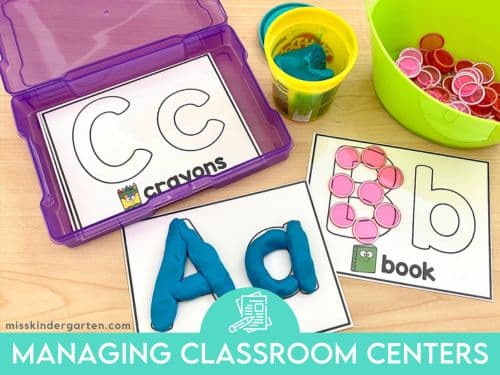
5 Tips for Managing Classroom Centers
Let me be the first to tell you that managing classroom centers as the only adult does not happen automatically. It takes time, planning, and intentionality to get to that point. But, with the right foundation, your students can not only be successful in centers but also learn valuable independent working skills too. These tips will help you run centers like a well-oiled machine. You will be free to focus on small group instruction knowing that your students are engaged in the learning process without the need for your moment-by-moment guidance.
Tip #1: Start Small
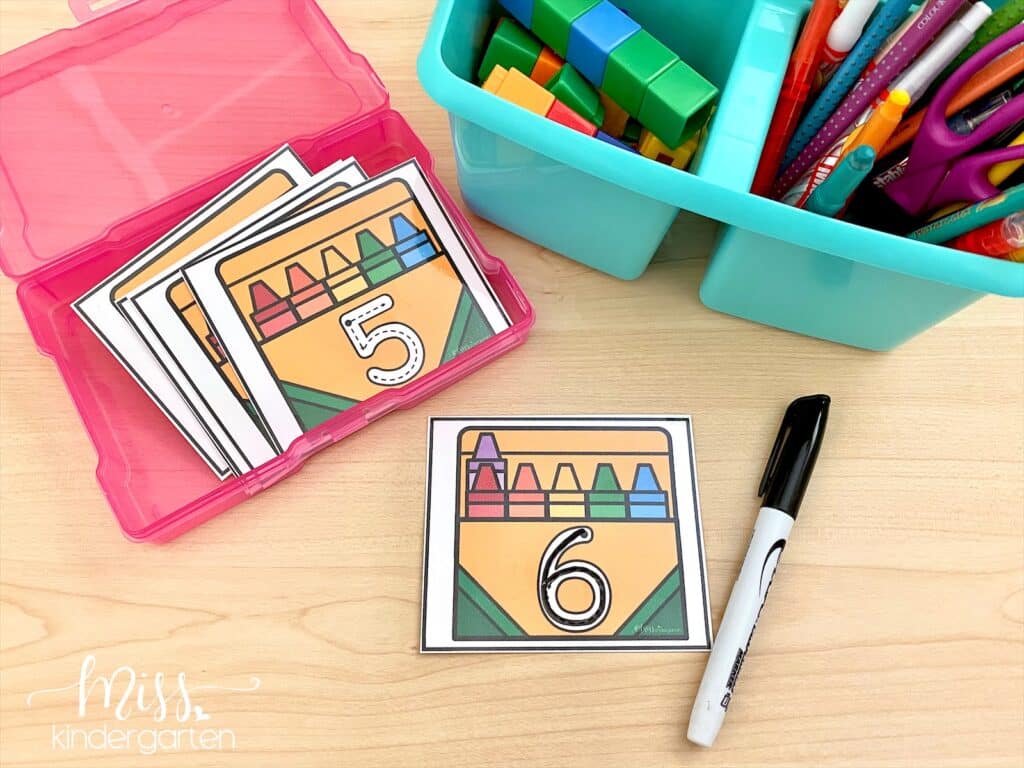
When you begin centers at the start of a new school year don’t jump right into a full center rotation . . . start small! Begin by introducing one activity to the entire class.
Explain the activity, model it, and make the expectation really clear. Then set a timer and have the entire class practice. Monitor what is going on and correct any necessary behaviors, but do your best to try and stay out of the way and let the students interact with the center activity. After all, the ultimate goal is for them to work without you. No helicopter teachers allowed. 🙂
Depending on how your students do, you might need to practice the same activity more than once. When you feel that your students have a good handle on the activity, it is time to introduce another activity. To do this you can do a whole group introduction, like the first activity, or introduce to half the students while the other half work on the original activity. Then switch the activities and introduce the new activity to the second half of the class.
Slowly introduce a few more activities until you have small groups working on different activities.
Grab some FREE low prep centers to try out with your class!
Tip #2: Take Your Time

Don’t be in a rush to get your students into rotations. Take your time introducing activities and center expectations. The more your students understand the basics the easier centers management will be when you are doing a full center rotation.
I wish I could say “Here’s the timing and formula you should use,” but I can’t. You will need to watch how your students do with each activity. Review procedures, re-teach as needed, and don’t move on until your students are working on their own with the last step.
And . . . if needed, take a step backwards.
In the long run, it will pay off to take your time at the beginning of the year. Building a solid foundation as you start centers will give you more instructional and center time down the road.
Tip #3: Have Procedures in Place
As with anything, having procedures and rules for centers is so important, and not just for the center activity. A key to managing centers with just one teacher in the room is having procedures in place for all.the.things! Before you let your students begin independent center rotations it is important that they know what to do. Here are some procedural questions you will want to answer:

- Where do they get their center activity and supplies?
- Is there a designated space they need to work in?
- How long will they work?
- How do they rotate to the next activity?
- What to do if you finish your activity early?
Answers to all these questions, and others, will help your centers run smoothly and efficiently.
After you have introduced some different centers, then it is time to introduce the concept of rotating. Don’t add new activities during this time. Instead, focus on the procedures for rotating and working independently.
Tip #4: Use Consistent Activities
Consistency is a great way to build independence in our young students and make managing centers a little easier. Using consistent center activities is the perfect way to do this. While the center activity stays the same, the skill or concept changes to give students opportunities to practice new skills all year.
There are many different types of centers that are easy to change out the skill while keeping the task the same. Center activities like clip cards, play dough mats, and puzzles are all perfect examples. While the academic skill or concept changes, the task the student completes stays the same. The familiarity with the task allows students to work independently all year long. These clip cards are great examples of how this works:

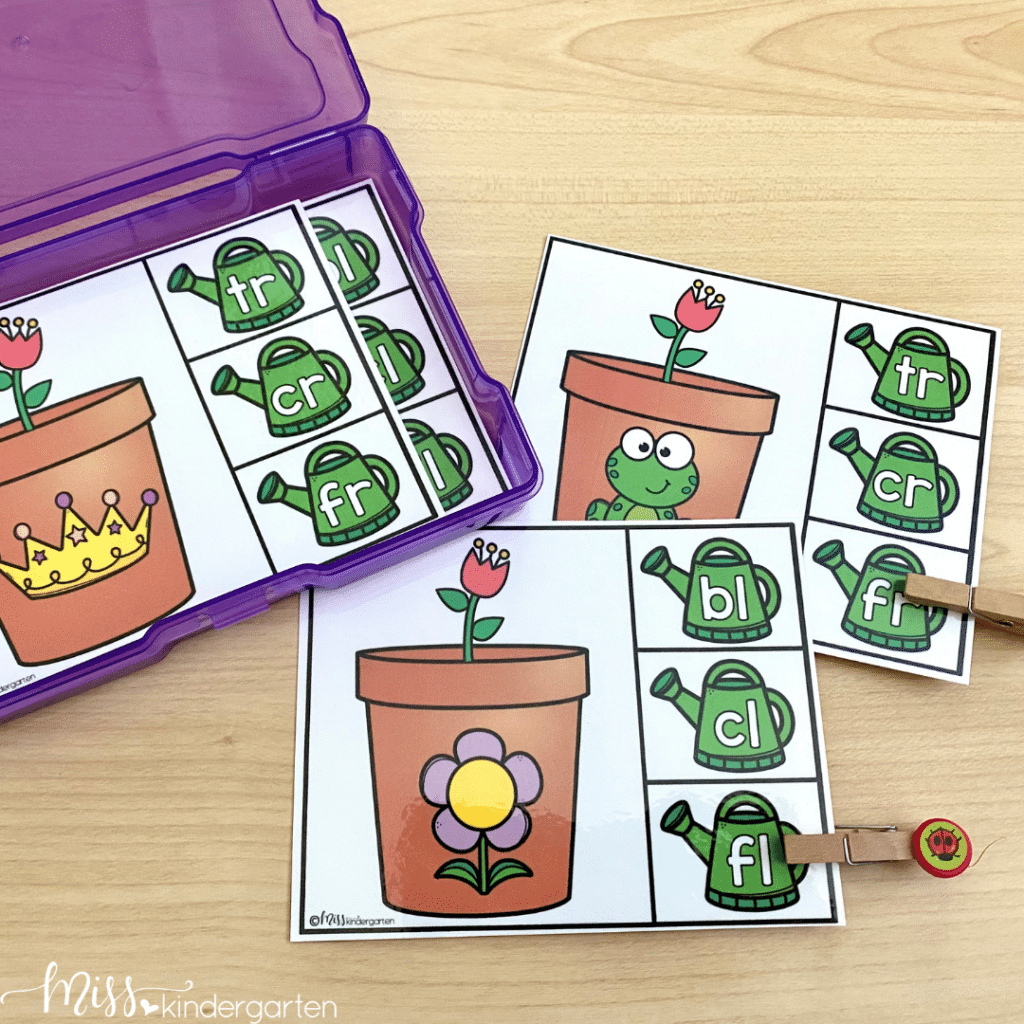
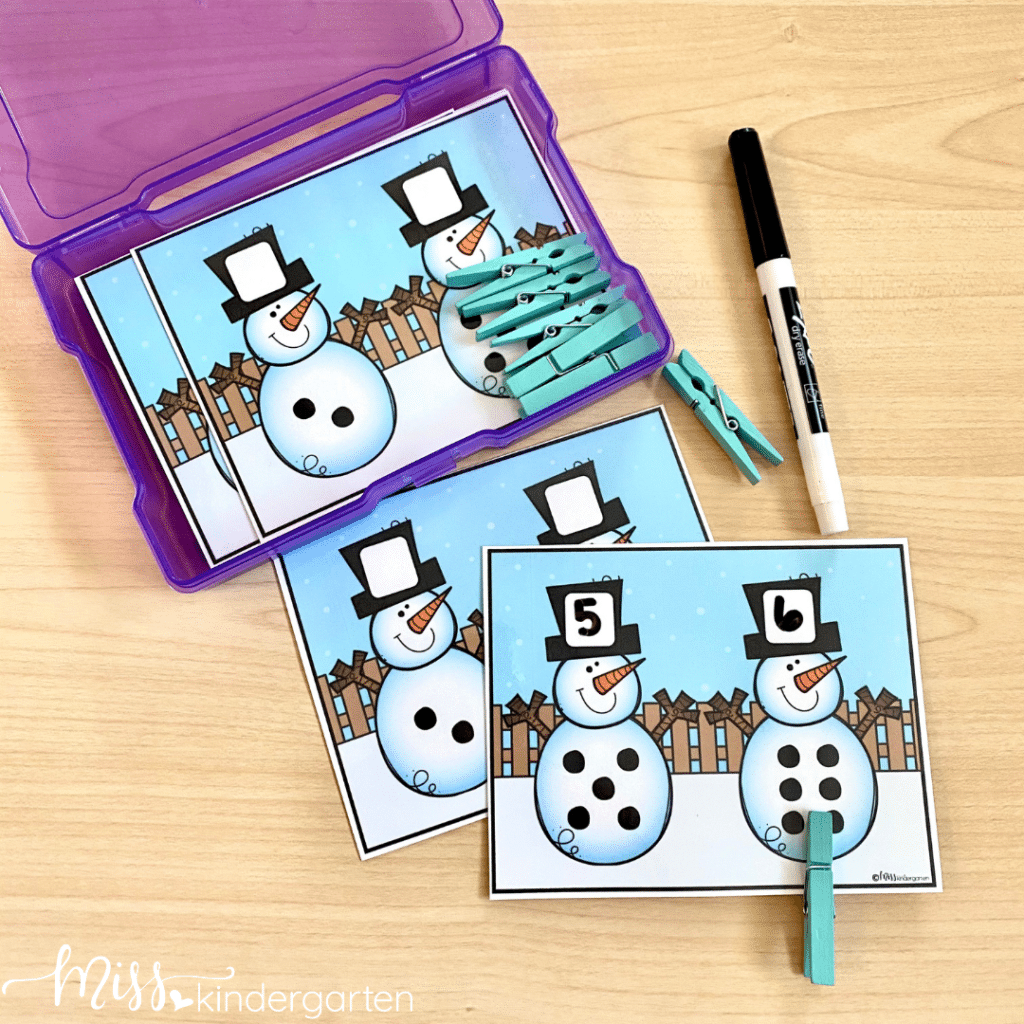
Another bonus is that by using consistent centers you save time in center prep. As you plan your centers the consistency allows you to focus on the skill change without the need for coming up with a new activity. More independence for students and less prep time for you . . . that’s a win-win for sure!
Tip #5: Be Ready for Questions
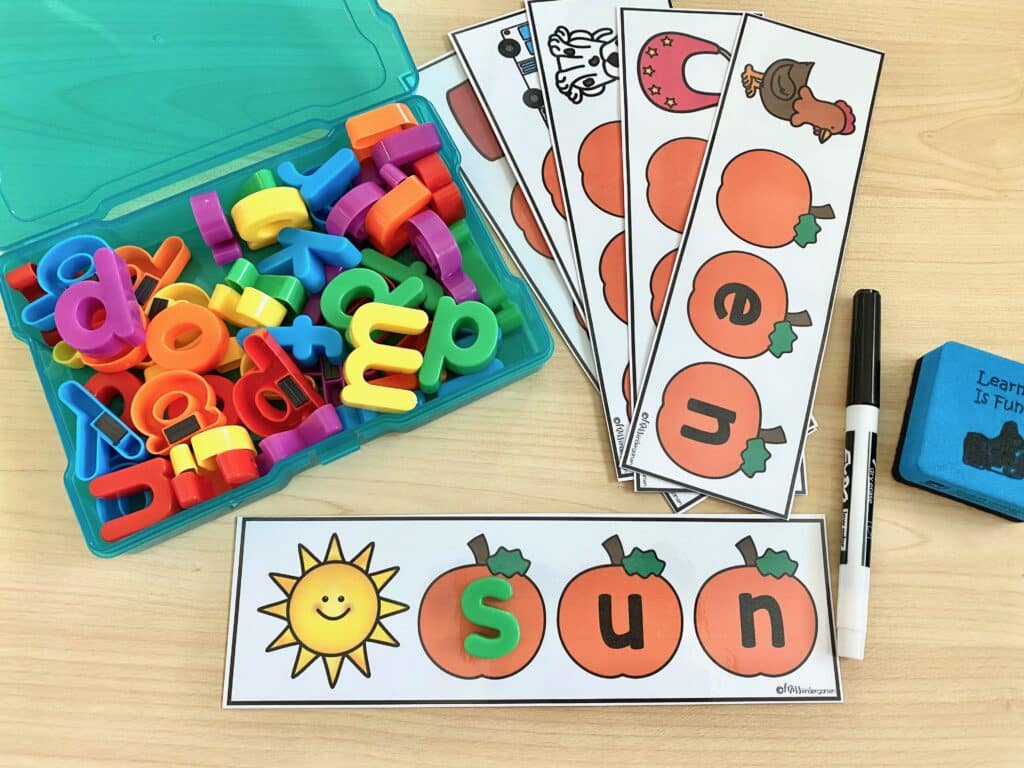
Having a plan for answering questions is another key part of managing centers. No matter how much you practice centers, or how great your procedures are, you will still have students with questions during center time.
Having a plan for how to address questions is really important. Although at the beginning you may be monitoring centers and reinforcing procedures and expectations, at some point you will want to be using this time for small group instruction.
That short time you have with each small group is so valuable. You can’t afford to lose time answering questions throughout the group. By using the tips above you can cut down on a lot of unnecessary questions. All of those “What do I do?” and “I’m done. Now what?” questions can be answered using the tips above.
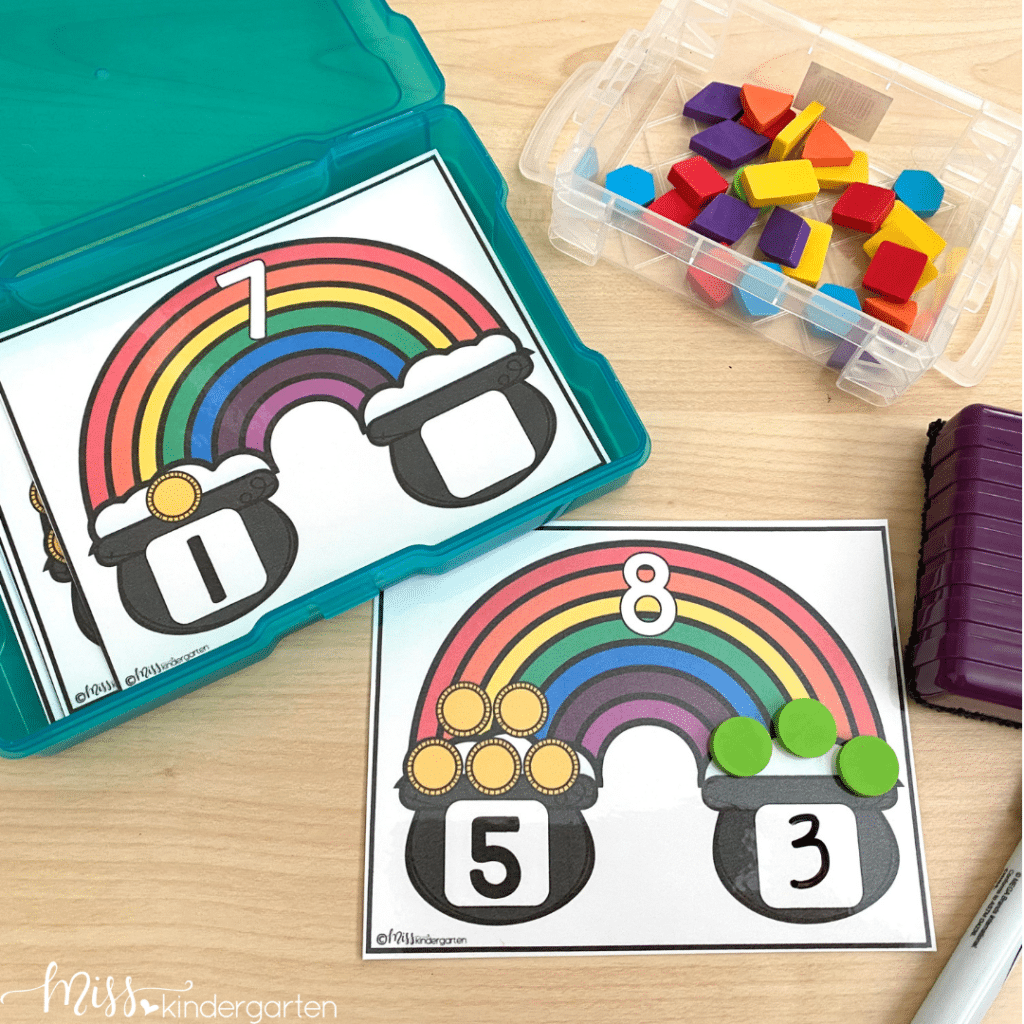
But . . . it won’t answer all the questions. It’s important to have a plan in place so students know when it is okay to ask you questions and when it is not.
I like to use an emergency rule for interrupting a small group. I teach my students from the beginning of our small group time that it is okay to interrupt when there is an emergency or when someone is sick or injured.
Don’t worry, the procedure doesn’t just leave students hanging with unanswered questions. The second part of this procedure is setting into place a system where students can get their questions answered. I like to use the “ask three before me” approach. Students learn to ask three of their peers for the answer before interrupting the small group to ask the teacher. More often than not, their question gets answered before asking the teacher. It’s a great way for students to learn to be problem solvers instead of running straight to the teacher.
Get Started with these Free Centers!
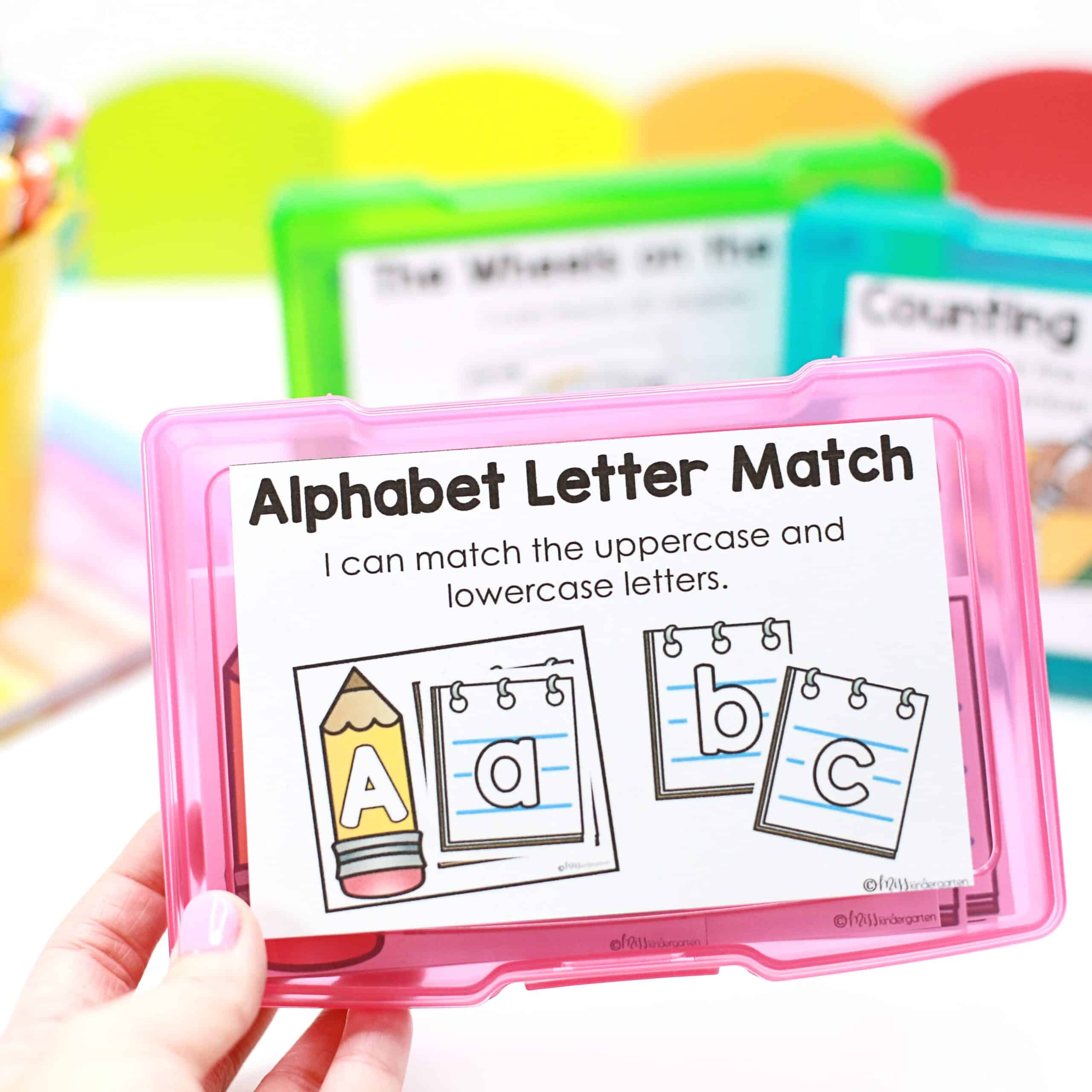
Free LOW PREP Centers
Engaging, hands-on centers that help your students practice important kindergarten skills while building fine motor strength! Enter your information below and I will send your free centers straight to your inbox!
Save These Tips for Managing Classroom Centers
Pin this to your favorite classroom Pinterest board and save these tips for kindergarten center management. You’ll be able to quickly find this post when you’re getting ready to set up centers in your classroom.
